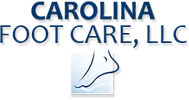What Is a Neuroma? A neuroma is a thickening of nerve tissue that may develop in various parts of the body. The most common neuroma in the foot is a Morton’s neuroma, which occurs between the third and fourth toes. It is sometimes referred to as an intermetatarsal neuroma. “Intermetatarsal” describes
Read moreBone/Joint/Tendon
-
Intermetatarsal Neuroma
Category: Bone/Joint/Tendon
-
Intoeing
Category: Bone/Joint/Tendon
Intoeing (pigeon toes) is a condition in which the feet point inward when walking. It is commonly seen in children and may resolve in very early childhood with no treatment or intervention. The child should be examined by a foot and ankle surgeon if the intoeing is causing significant tripping, difficulty
Read more -
Joint Pain in the Foot
Category: Bone/Joint/Tendon
The foot contains 26 bones and more than 30 joints. Many people experience pain involving one or more of these joints. The pain may be accompanied by swelling, tenderness, stiffness, redness, bruising and/or increased warmth over the affected joints. Joint pain may be caused by trauma, infection, inflammation,
Read more -
Joint Swelling in the Foot
Category: Bone/Joint/Tendon
The foot contains 26 bones and more than 30 joints. The body’s natural response to any type of joint injury is to increase blood flow to the affected area. This results in an accumulation of fluid in the tissues in and around the joint, resulting in swelling. Depending on the cause of the injury, joint
Read more -
Lisfranc Injuries
Category: Bone/Joint/Tendon
The Lisfranc Joint The Lisfranc joint is the point at which the metatarsal bones (long bones that lead up to the toes) and the tarsal bones (bones in the arch) connect. The Lisfranc ligament is a tough band of tissue that joins two of these bones. This is important for maintaining proper alignment and
Read more -
Os Trigonum Syndrome
Category: Bone/Joint/Tendon
What is the Os Trigonum? The os trigonum is an extra (accessory) bone that sometimes develops behind the ankle bone (talus). It is connected to the talus by a fibrous band. The presence of an os trigonum in one or both feet is congenital (present at birth). It becomes evident during adolescence when
Read more -
Osteoarthritis of the Foot and Ankle
Category: Bone/Joint/Tendon
What Is Osteoarthritis? Osteoarthritis is a condition characterized by the breakdown and eventual loss of cartilage in one or more joints. Cartilage (the connective tissue found at the end of the bones in the joints) protects and cushions the bones during movement. When cartilage deteriorates or is
Read more -
Osteomyelitis (Bone Infection)
Category: Bone/Joint/Tendon
Osteomyelitis (an infection of the bone) can be caused by a variety of microbial agents (bacteria, fungus), the most common of which is staphylococcus aureus. This serious infection can occur from a number of sources: • It may enter bone through an injury, such as an open fracture with the bone
Read more -
Osteopenia
Category: Bone/Joint/Tendon
Osteoporosis, which means “porous bone,” is a condition in which bones become weak and thin due to lack of calcium. People with osteoporosis have an increased risk of bone fractures (breaks). Osteoporosis is often called the “silent disease” because many people do not realize they have it.
Read more -
Osteoporosis
Category: Bone/Joint/Tendon
Osteoporosis, which means “porous bone,” is a condition in which bones become weak and thin due to lack of calcium. People with osteoporosis have an increased risk of bone fractures (breaks). Osteoporosis is often called the “silent disease” because many people do not realize they have it.
Read more -
Peroneal Tendon Injuries
Category: Bone/Joint/Tendon
What Are the Peroneal Tendons? A tendon is a band of tissue that connects a muscle to a bone. The two peroneal tendons in the foot run side-by-side behind the outer ankle bone. One peroneal tendon attaches to the outer part of the midfoot, while the other tendon runs under the foot and attaches near
Read more -
Pigeon-toes
Category: Bone/Joint/Tendon
Pigeon toes (intoeing) is a condition in which the feet point inward when walking. It is commonly seen in children and may resolve in very early childhood with no treatment or intervention. The child should be examined by a foot and ankle surgeon if the intoeing is causing significant tripping, difficulty
Read more -
Posterior Tibial Tendon Dysfunction (PTTD)
Category: Bone/Joint/Tendon
What Is PTTD?The posterior tibial tendon serves as one of the major supporting structures of the foot, helping it to function while walking. Posterior tibial tendon dysfunction (PTTD) is a condition caused by changes in the tendon, impairing its ability to support the arch. This results in flattening
Read more -
R.I.C.E Protocol
Category: Bone/Joint/Tendon
Rest: Stay off the injured (foot/ankle). Walking may cause further injury. Ice: Apply an ice pack to the injured area, placing a thin towel between the ice and the skin. Use ice for 20 minutes and then wait at least 40 minutes before icing again. Compression: An elastic wrap should be used to control
Read more -
Restless Legs
Category: Bone/Joint/Tendon
An uncontrolled urge to move one’s legs is referred to as "restless legs." This can happen while trying to sleep, while traveling, or any time the legs are at rest. There is no known test to diagnose the problem; instead, the foot and ankle surgeon considers the individual’s history to determine
Read more -
Rheumatoid Arthritis in the Foot and Ankle
Category: Bone/Joint/Tendon
What is Rheumatoid Arthritis? Rheumatoid arthritis (RA) is a disease in which certain cells of the immune system malfunction and attack healthy joints. RA causes inflammation in the lining (synovium) of joints, most often the joints of the hands and feet. The signs of inflammation can include pain,
Read more
Contact Us
Our Location
Find us on the map
Carolina Foot Care, LLC
1399 John B White Sr Blvd
Spartanburg, SC 29306-3911
